Description
We have collaborated with our friends at Division-6 to bring you this handy 1650 Mini Sequencer in 2 MU.
The 1650 gives you standard CV and gate out, plus an ACC out (Accent? Accessory?) Use the ACC output to open up a filter, enable a glide, trigger a drum, or whatever you can think of.
It has its own internal clock to get you up and running in a hurry, but you can connect an external clock if you need greater control of tempo or want to sync with other devices.
The module will store your latest sequence even when the power has been removed.
Inputs
- CLOCK IN (External clock input)
- START IN (Expansion input; Starts sequencer back at step 1. Use for daisy-chaining multiple units)
Outputs
- END OUT (Sends pulse when sequencer goes past last step. Use for daisy-chaining multiple units)
- CV OUT
- GATE OUT
- ACC OUT (Can be programmed on or off in each sequence step)
Features
- CV OUT covers 5 octaves, and can be tuned using rear-accessible trim pot
- Sequences can be set to any length up to 16 steps by using LOOP feature
- Setting a step to REST holds previous pitch and doesn’t fire GATE
- In Standby mode, sequencer can be used as a tiny keyboard without altering programmed sequences
Cascading
You can also cascade multiple 1650’s to create longer, more complex and syncopated patterns. Why would you need more than one sequencer?
- More sequencers = more steps
- Use one for playing notes and the other for transposing those notes
- Can be used as a clock divider
- Run in parallel for multiple CVs / triggers
The two sequencers will run completely independently, or you can daisy-chain them using the START IN / END OUT jacks to create sequences of any length.
Product Documentation
Dual Mini Sequencer Operating Instructions
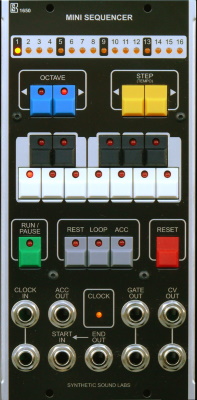
Playing Sequences
Push RUN to start playing a sequence. The RUN LED will light to tell you that you are in Run mode. Push it again to pause. The sequencer steps can be programmed while paused.
Push RESET to stop the sequence, go to step 1, and enter Ready mode. The STEP LED will blink to let you know that you are in Ready mode. This means that when you press RUN again, the sequencer will play step 1 on the next clock pulse instead of skipping it and going to step 2.
If you want to start on a different step, you can use the STEP LEFT and STEP RIGHT buttons to pick a different one.
While in Ready mode, you can use the note/keyboard buttons to manually play tunes without messing up the sequence you have stored in memory. Gate timing will follow your button presses.
Programming
Programming is done while the STEP LED is steady (not the blinky Ready mode) and the sequencer is not running. You can enter Program mode by pressing RESET a second time, or pausing a sequence with the RUN button. Use the STEP LEFT and STEP RIGHT buttons to pick which step you want to program, then press the note and octave you want that step to play. The new note is automatically stored in non-volatile memory.
Remember about the STEP LED:
- Blinky = Ready Mode = Will start on selected step = Can play keyboard live
- Steady = Program = Any notes you push will get saved in that step
The sequencer covers 5 octaves, so you can use the OCTAVE UP and OCTAVE DOWN buttons to transpose the keyboard up and down. The OCTAVE UP and OCTAVE DOWN LEDs will tell you which octave the keyboard is currently set to:
- Down Steady: -2 Octaves (0V to <1V)
- Down Flickery: -1 Octave (1V to <2V)
- Both Off: Middle Octave (2V to <3V)
- Up Flickery: +1 Octave (3V to <4V)
- Up Steady: +2 Octaves (4V to <5V)
In addition to standard notes, you can also program a REST, LOOP or ACC into a step:
- REST: Instead of containing a note, a REST step holds the previous note and doesn’t fire the gate.
- LOOP: Instead of containing a note, as soon as the running sequencer hits a LOOP step it is immediately sent back to step 1. You can use this to create any length sequence you want. For example, if you only want steps 1-13 in your sequence, you would make step 14 a LOOP step.
- ACC: In addition to a note, the ACC output can be programmed into any step. Use the ACC button to toggle it on and off.
Clock
While the sequencers are much more useful when driven by an external clock, they do include internal clocks. They are active when the sequencers are first powered on, but are disabled when an external clock pulse is received. To reactivate the internal clock, you can press and hold the RESET button for about 2 seconds (this soft-resets the sequencer).
To adjust the tempo, use the STEP buttons while a sequencer is running.
You can use the CLOCK IN jacks to provide an external clock signal to the sequencer. The CLOCK IN jacks are normalled, so you can easily run two or more sequencers from a single clock.
Expansion
The START IN and END OUT jacks can be used to daisy-chain sequencers together:
- START IN: A gate pulse into this jack resets the sequencer to step 1. It also puts it in run mode if it’s not already.
- END OUT: Sends a gate pulse pulse when a running sequence drops off the end (goes past 16 or hits a Loop step).
The switch contact in the START IN jack is normalled to the END OUT signal, so with nothing plugged into either jack, each sequencer will loop by itself once it goes past the last step of a sequence. This is exactly the same as running a patch cord between END OUT and START IN on a single sequencer.
You can connect a cable to the END OUT jack without breaking the internal looping. This gives you an “end-of-sequence” gate signal that you can send to other modules, or use to start other sequencers.
Connecting a cable to the START IN jack breaks the internal looping, so when the sequencer gets to the end of the sequence it goes into Ready mode rather than continuing to run.
Run 2 (or more) sequencers in series: To make a 32-step sequence, connect END OUT of Sequencer 1 to START IN of Sequencer 2, and END OUT of Sequencer 2 t0 START IN of Sequencer 1.
Of course, if you have more sequencers (or even other devices), you can daisy-chain as many as you want.
Calibration
You can use the trim pot on the rear of the module to calibrate the sequencer to 1 volt per octave.
Procedure:
- Connect a voltmeter to the CV OUT jack of the sequencer you want to calibrate
- Press RESET to make sure the sequencer is in Ready or Program mode (either will work)
- Press the OCTAVE UP button a few times to set the keyboard to the highest octave (OCTAVE UP LED on steady)
- Press the NOTE C button
- Adjust the trim pot until the meter reads as close to 4.000V as you can get it
- Check the C notes on the lower octaves by pressing the OCTAVE DOWN then NOTE C buttons. Each one should be an even voltage. If not, adjust the trim pot until they are as close as possible
| C4 (Highest Octave) = 4.000V |
| C3 (Higher Octave) = 3.000V |
| C2 (Middle Octave) = 2.000V |
| C1 (Lower Octave) = 1.000V |
| C0 (Lowest Octave) = 0.000V |
The outputs of the sequencer are buffered, so they should maintain their voltages even when loaded down by another module. You may find, however, that the standard calibration doesn’t work with certain modules. In this case, you can use the trim pot to adjust the calibration so that it is correct for your module.


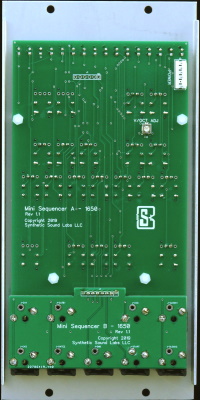
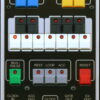
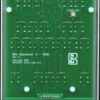

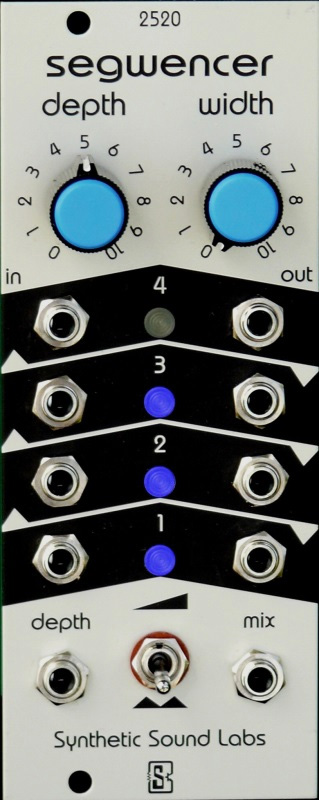
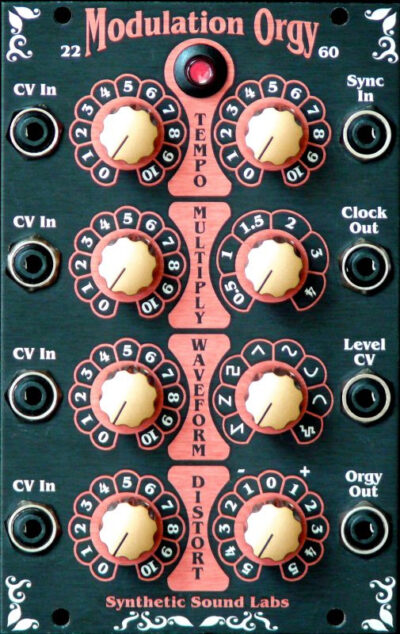
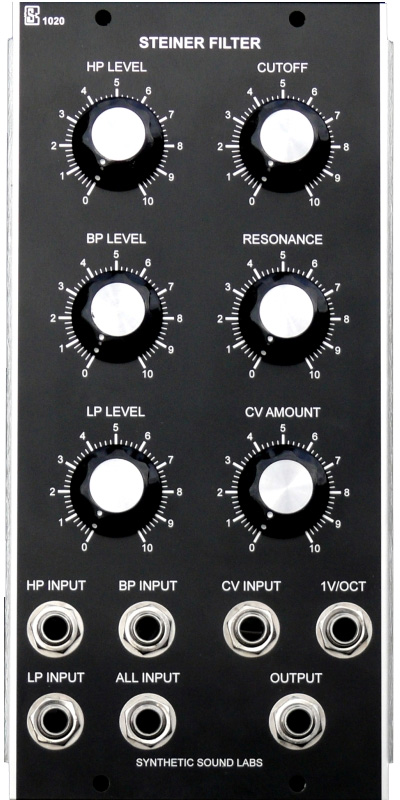

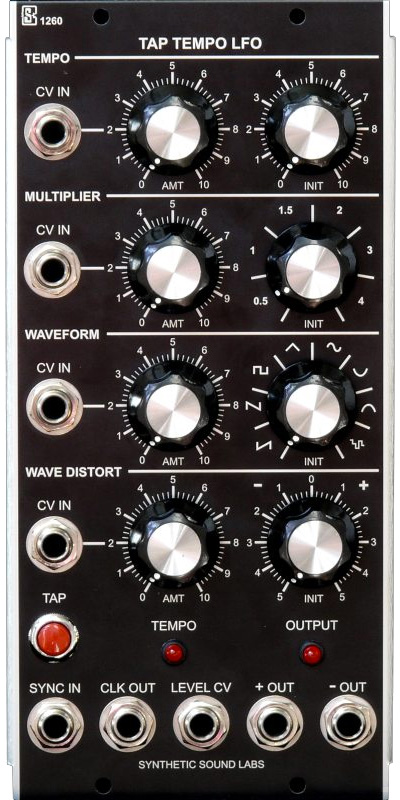
It´s sturdy, well build, buttons feels great. Easy to use.
If you want a small and simple, yet versatile sequencer this is a very good purchase. It would be a great first sequencer for a lot of newcomers to the MU world. And for all of us who all ready got one or several of the big sequencers, but just wants to squeeze in another one
This is a great little sequencer for any size setup. This is a great way to come up with quick step sequences easily. Usually it involves quite a few patch cords and quantizers as well as tuning exercises. This eliminates a lot of steps and is a very efficient way to create melodic lines in a hurry.